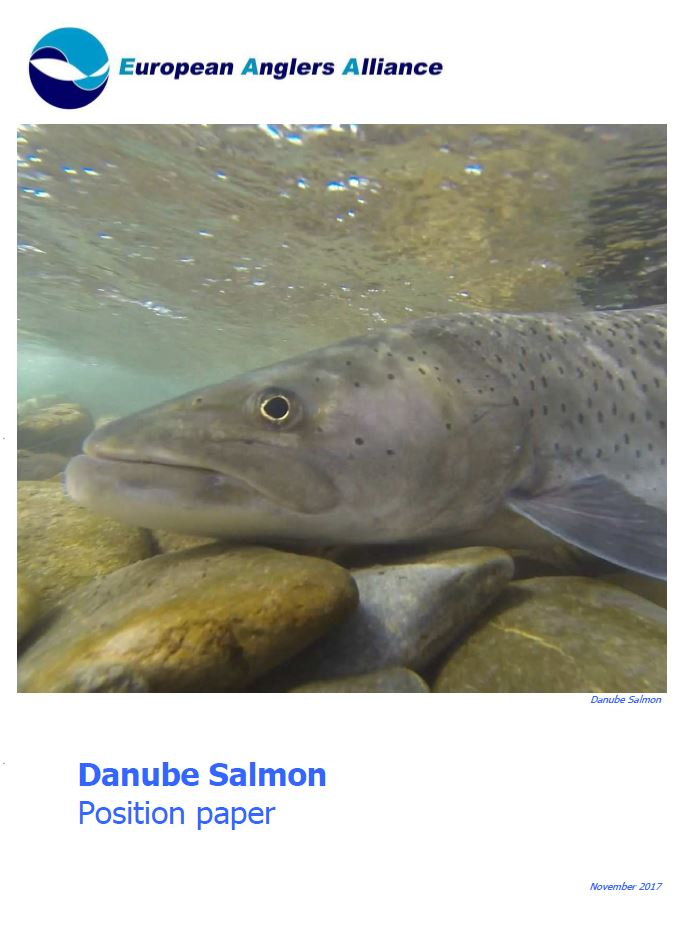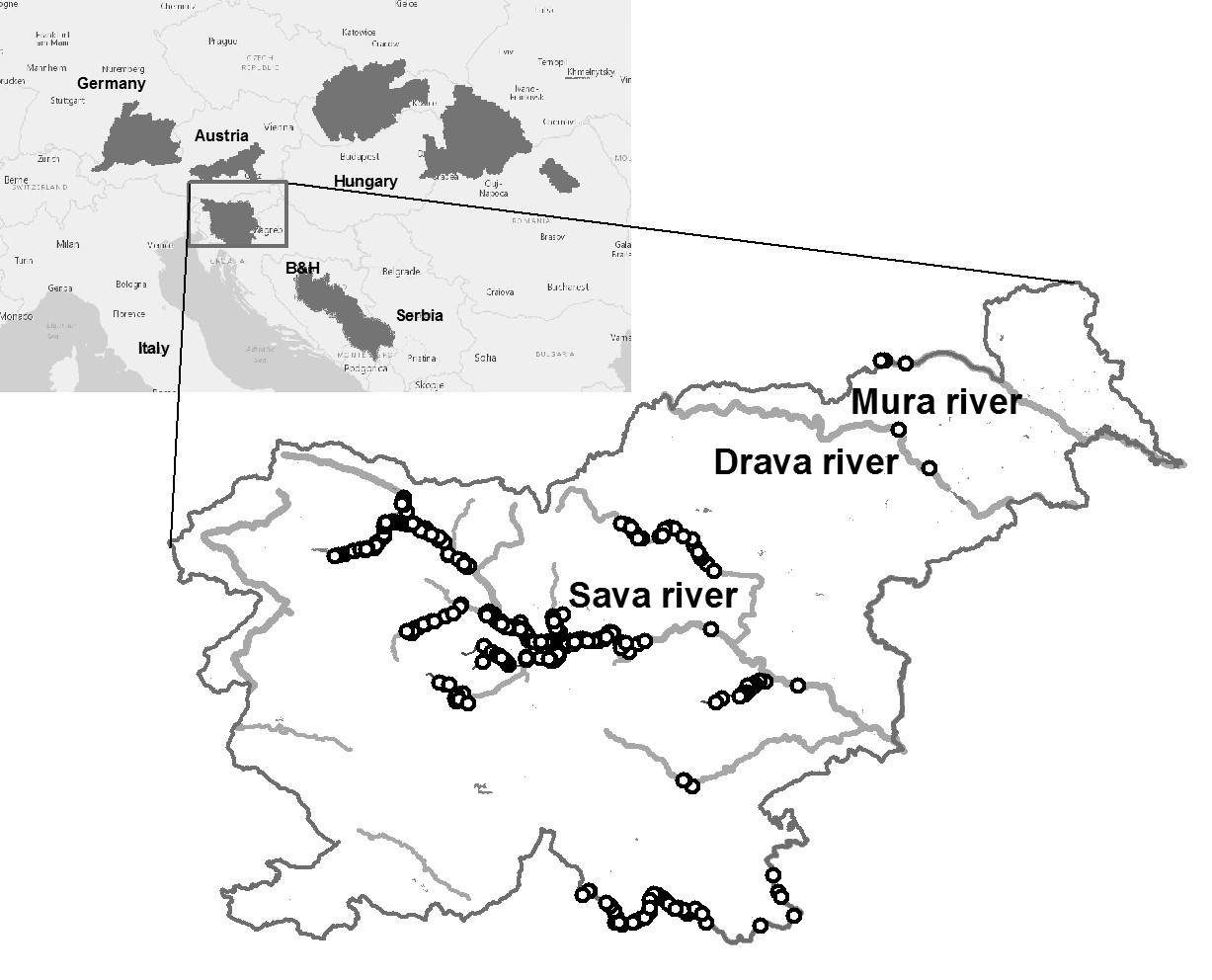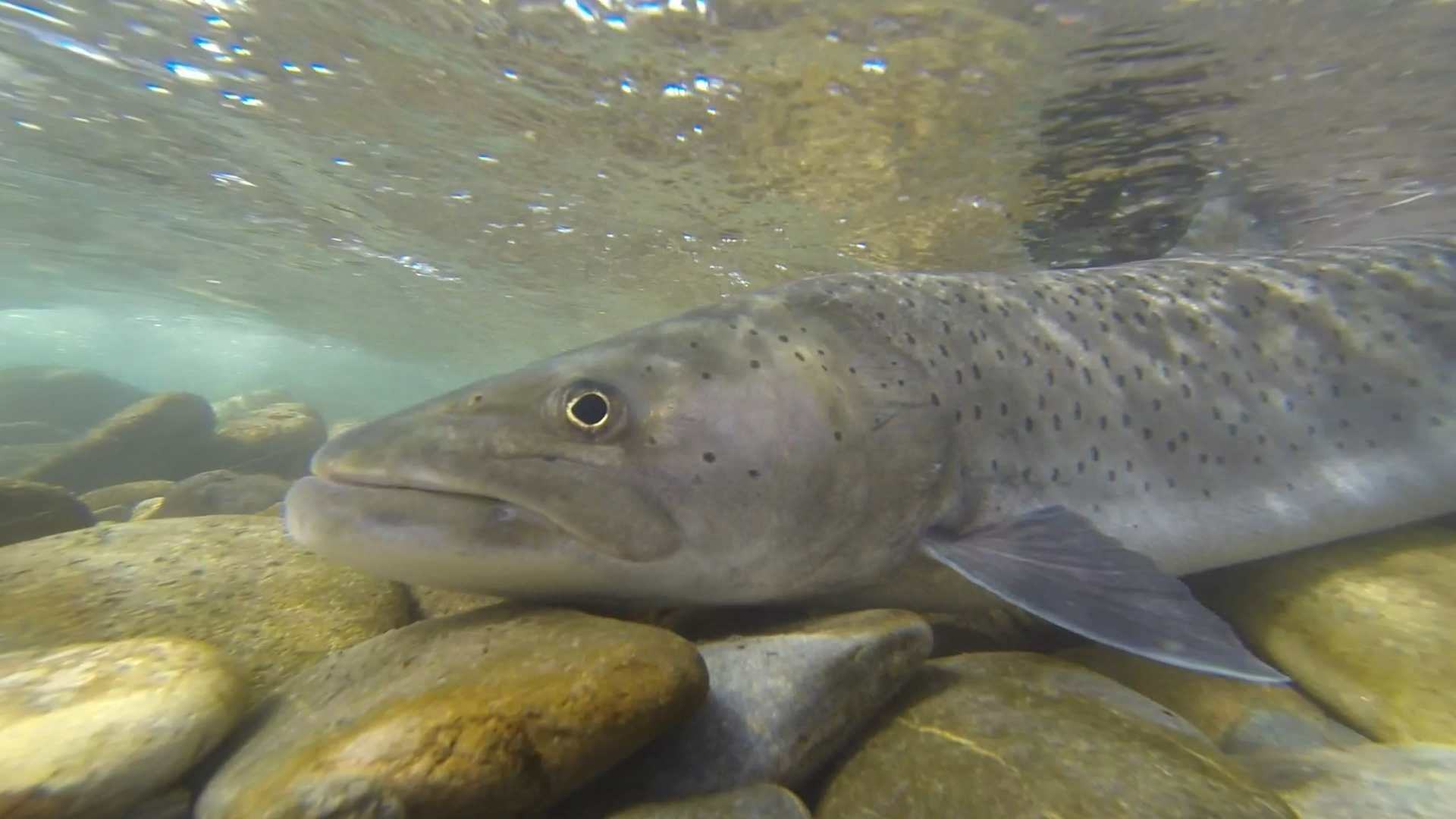EAA position on the Danube Salmon
 The Danube Salmon
The Danube Salmon
The Danube salmon Hucho hucho (Linnaeus, 1758), also known as Huchen, is the largest salmon in Europe. Its distribution is limited to the Danube drainage and is severely fragmented. As a predator, The Danube salmon plays an important role in fish assemblage. It attracts international interest among nature conservators and anglers, it is an economically and socially important game fish.
The species has undergone a massive decline starting over 100 years ago which was caused by overfishing, pollution and dam construction, which prevent its free movement, as it needs to reach spawning grounds. Today, most populations depend on stocking with farmed fish. Self sustainable populations are now rare and hard to indentify. There are evidences, especially numerous spawning grounds that prove that there are still natural populations in Slovenia in the Sava catchment as well as in The Balkan region in Croatia, Bosnia and Herzegovina, Serbia and Montenegro There are fewer in Germany and Austria.
Hydropower plants (HPP) which severely alter natural flow regime of rivers and so destroy the habitat of the Danube salmon, currently present the main threat. Dams and weirs interrupt the migration routes of the Danube salmon and its prey which all together, with other threats, impact the species to the extent that is considered endangered (E) (IUCN).
What EAA advocates for:
Stopping further destruction of the river habitats that are indispensable for Danube salmon and its prey, adopting best management practises and improving the river habitat with existing HPP.
Preservation of free flowing stretches of the rivers
1. Build no HPP that accumulate water. Only run-off-the-river HPP with high quality fish passages are acceptable.
2. River restoration, especially creation of shallow shore habitats and river branches to improve habitat quality for juvenile Danube salmon and the whole fish community.
3. Elimination of local sources of pollution.
Application of best management practises
1. Hatchery produced Danube salmon used for repopulation should be used with caution because of its known negative effects on natural populations, especially genetics. Best practices for artificial reproduction and stocking of Danube salmon should be developed.
2. Artificial in-river propagation (cocooning) should be tested and applied for Danube Salmon.
3. Stocking only with the Danube salmon from the local populations (based on genetic analysis).
Improvement of the habitats in the rivers with existing hydropower plants (HPP)
1. Removing barriers or constructing the fish passages on the existing dams and weirs taking into account the requirements of the Danube salmon (Guidelines: icpdr/iksd Technical paper, 2013; BMLFUW, 2012; Seifert, 2012).
2. Assuring downstream migration of adults and their offspring at dams and weirs.
3. Applying measures to facilitate dynamic processes that assure sediment transportation along the river or active input of bed sediments to restore quality spawning grounds.
4. Applying measures to lessen the impacts of hydropeaking (unnatural fluctuation of the discharge caused by operation of the HPP).
An example of target research project from Slovenia
The middle stretch of the Sava River in Slovenia is considered to hold one of the most vital and self sustainable populations of Danube salmon in Europe. Protected since 2013 under Natura 2000 this stretch is also under threat from plans for HPP.
A project, commissioned and financed by Ministry of agriculture, forestry and food and Slovenian Research Agency investigated population of the Danube salmon and its habitat in the middle stretch of the Sava River in Slovenia with an aim to elaborate an expertise for species conservation.
The project was comprehensive and included population survey, genetic analysis, habitat modelling, inventory of the spawning grounds, tagging to establish migration routes, inventory of the barriers (dams, weirs, rock weirs) and fish passages, analysis of management practices and legal grounds.

Map on the right: Fragmented distribution of Danube salmon in Europe (source: IUCN 2016) and in Slovenia (graphics: FRIS)
The main findings:
Despite the fact that stretch of the middle Sava is inhabited by one of the most vital populations of Danube salmon, it was noted that it is relatively small (a conclusion is based on sampling and genetic results). It is isolated from the populations in the upper Sava and in the tributaries due to impassable barriers and it is under negative impact of the existing HPP. Putting up the chain of HPP in the middle Sava would destroy the remaining population of Danube salmon (shown by habitat modelling).
Suggestions for the improvements of the management practises, measures to improve habitat quality and mitigate the impact of the HPP were proposed and are included in this position paper.
November 2017
For notes and references please download the position paper
Downloads:
